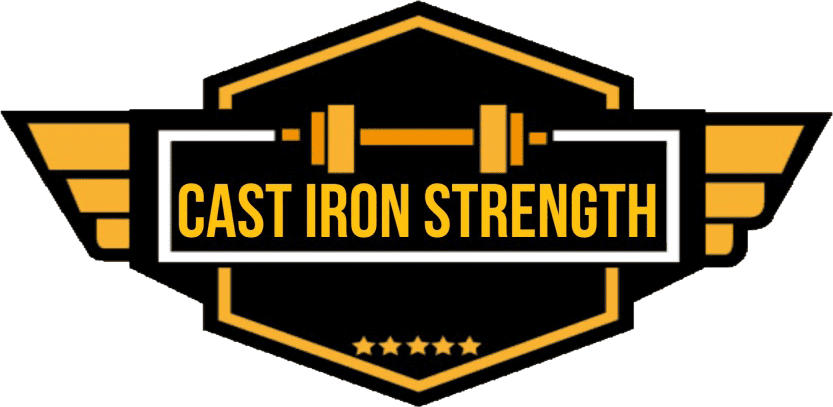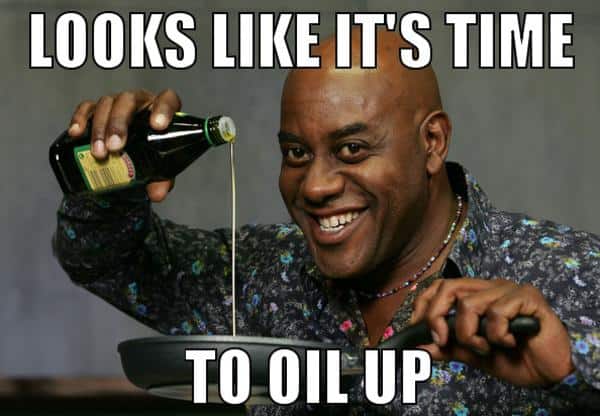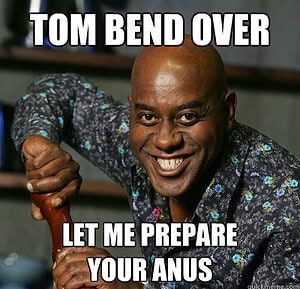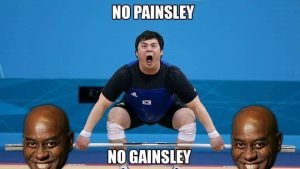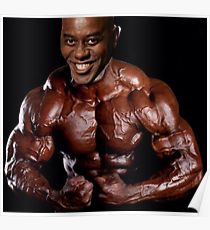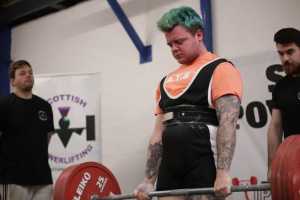The mobility-stability spectrum that is. Other spectrums may vary. You stare long enough at the memes, sometimes the memes stare back.
Mobility or Stability?
Onto the useful stuff. I see loads of athlete and coaches droning on about mobility, however, there is another side to the coin which is often more applicable. It seems that foam rolling is the hammer, and everything becomes the nail.
Mobility, defined by my dumb ass, is how much moving a certain joint can do, savvy? Stability is how much control over that range you have.
‘With great range, comes great responsibility’- Uncle Ben- Probably.
This being a continuum, everyone falls somewhere on it. For some stereotypical cases, ladies tend to fall more on the mobility end, including more frequent cases of hypermobility and even joint laxity. Gym bros tend to suck at literally everything.
Passive and Active
Before getting into some practical examples, there are two more terms that need cleaning up. Active and Passive range of motion.
Active range is the range you can take a joint through under your own power.
Passive is the range the joint has whilst muscular structures are Netflix and chilled.
These two ranges can differ MASSIVELY, and the difference in the two is what we’re going to talk about since it’s probably the reason you suck.
Practical tests: Squat
Simple examples pertaining to each of the three power lifts. Squat being the active range we want. A passive range check for it, would be if someone can set up on hands and knees, with active feet. Then rock back to the appropriate depth. Essentially mimicking a squat, but rotated 90 degrees. If they can achieve this, they have mobile enough hips to squat.
So why can’t they squat upright with a bar? There are a whole bunch of possibilities, but hip mobility isn’t one of them. So, stop foam rolling your IT bands. One common issue is a lack of core stability, usually being compensated for by hip ad or abductors. If said client gets a ‘tight’ anterior hip, or feels like their adductors are ‘tight’ or stiff, this can be why. They’re essentially trying to compensate for core musculature being lazy.
Solution? Adding either regular or side planks into the warm-up, to ensure the core is firing on all cylinders can fix this like a magic.
Practical Test: Bench
Honestly, the bench press is such a stable exercise in the first place. If coached properly it fits the bill as a great shoulder rehab exercise, I wish I was joking.
Right, so what we’re dealing with in bench is shoulder abduction (this is never an issue, out with of medical reasons), some scapula retraction and depression. That’s it shoulder wise. Elbow, do the bend ting. Bench press is another huge culprit for poor stability, you’ll see plenty of folk crank out sets of 20 rotational drills because pre-exhausting stabilizers before you need them sounds like a solid plan. You’ll hardly ever see people doing some wall or floor slides though.
So, passive range. This one usually requires an assist, the only solo one I know of is to get on hands and knees, and with straight arms let your chest cave in between your arms. Otherwise, you’re going to need an accountabilibuddy to take your arm and scapula through some range while you lie on your face.
The active is where you do the work. If you lie face down, put your arms out in a T shape, pinch your shoulder blades together in the middle. Key point, lots of people aid retraction with their traps, and end up ½ shrugging during these drills. Please enrol your buddy again to sell you out when you suck at this drill. Film it if needed.
Once you’ve seized the means of retraction for the motherland. It’s time to enter the great depression. This being when you depress your scapula down. Think of it like an anti-shrug. Now, their powers combined! You can control your scapula, congrats. Again, bench isn’t rocket surgery, just pinch your scapula back and down and push the thing.
Practical Test: Deadlift
The main issue folk have with deadlifts is a failure to maintain spine neutrality. In the context of this article, we’re just going to assume its not just a weak core (it’s usually a weak core, or sometimes putting yourself in a worse position by shooting hips up too fast).
To test passive range, lie flat on your back and start with both feet tucked up, soles flat on the floor. Extend one leg (your favourite leg ideally), then either using a band wrapped around your foot or your buddy, bring it up in that classic hamstring stretch position. It’s a lot easier to stay relaxed if you have someone move your leg for you, but the band can work.
Active range, is just the same test, sans help. So, ditch the band or your co-star, and extend that leg, flex your quad hard, and then raise it up through the range again. Is there a significant difference? If you’re all good, progress the drill to standing. Essentially, it’ll look like some weird standing, goose step esq, leg raise.
Take Homes:
While these are only a few examples, the thought process can be applied to any movement you’re having an issue with. The process remains the same:
-Establish what joint actions need to happen
-Test passive range in as stable an environment as you can, almost always using the floor.
– If passive range isn’t an issue, proceed to active range testing. Build up positional difficulty until you run into your problem.
– Discern the changes between your last successful drill and where you failed to narrow down to the problem.
-??????
– Profit.
About the Author
Will Brown has been working as a personal trainer for 7 years, after co-founding Athlete Training Systems. What started as a rack and some plates in a garage has now grown into a full powerlifting gym. Will has spent the past few years coaching a wide variety of clients ranging from amateur athletes in rugby and American football to successful business leaders in the Edinburgh area.
Will played hockey for The Edinburgh Academy for over a decade culminating in a three-year stint with their first XI squad. A love for American football then led him to several years at various positions on the Edinburgh Wolves American football team. After several more severe injuries, he left football and moved on to powerlifting where he strives to be anything better than average.
